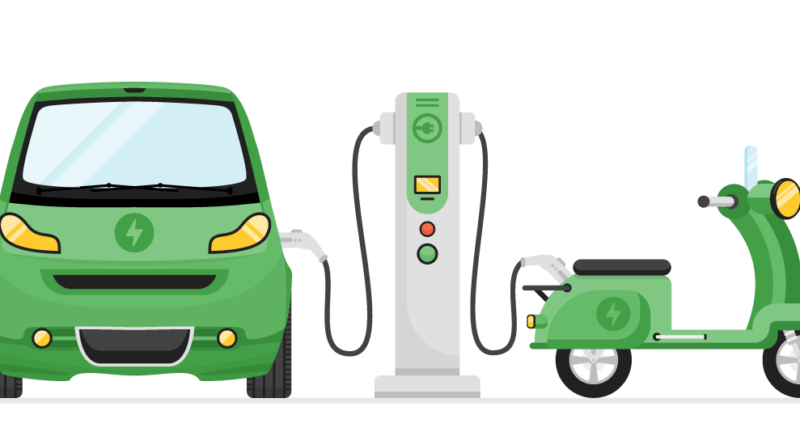e Vehicle Subsidy-2024
e Vehicle Subsidy
A new initiative to encourage the sale of electric two- and three-wheelers across the nation was unveiled by the center on Wednesday. The Electric Mobility Promotion Scheme (EMPS), 2024, would receive an allocation of Rs 500 crore, as stated by Heavy Industries Minister Mahendra Nath Pandey. Starting on April 1, this program will run for four months.
Sources claim that the Ministry of Heavy Industries (MHI) has written a note for the Cabinet on the extension of the Faster Adoption and Manufacturing of (Hybrid &) Electric Vehicles in India (FAME India) Scheme. The note hints at potential disruptions to India’s rapidly developing e-mobility ecosystem should the scheme’s implementation be interrupted.
Currently, India’s premier program for advancing electric mobility is called FAME, or Faster Adoption and Manufacturing of (Hybrid and) Electric Vehicles. FAME-II, which is presently in its second phase of implementation, has a budget allocation of 10,000 Cr and will be in effect for three years starting on April 1, 2019. The program’s incentives are as follows:
Follow Our web site :- hindidiaries.info for more information
Two suggestions have been presented by the ministry: one calls for a two-year extension of the Rs 12,600 crore program, while the other calls for a four-month extension with an allocation of Rs 500 crore.
“Two suggestions have been forwarded, as this is the last Cabinet meeting before the general election. A government official stated that one plan is to sustain the industry until a new government is established, and the other is to request a two-year extension.
A e Vehicle Subsidy cap of Rs 10,000 per vehicle is in place for e2Ws. Rs 50,000 has been set as the maximum subsidy cap for e3Ws.
During the four months from April 1 to July 31, this program will cover demand incentives for e2W and e3W to be sold and registered.
Though the initial cost is higher, you may think that buying an electric car is more expensive than buying one with an internal combustion engine. Electric vehicles continue to have lower lifetime costs.
The program will only provide incentives for registered automobiles with modern batteries. The programme will primarily apply to vehicles registered for commercial use in the e-3W, e-4W, and e-bus categories, or vehicles utilized for public transportation, with a focus on offering inexpensive and environmentally friendly public transportation options for the general public. But as a bulk component, privately owned registered e-2Ws are also covered by the program.
To help you buy electric automobiles, the government provides a variety of financial benefits. The following are the main ways to receive incentives:
Acquisition Incentive Programs: The consumer receives a straight discount off the price of the electric vehicle.
Coupons: monetary incentive with a later reimbursement
Interest-based subsidies:A discount on the interest rate is provided while obtaining a loan.
Exemption from road taxes:Road tax is not charged at the time of purchase.
Exemption from registration fee:When buying a new car, the one-time registration charge is waived.
Benefit from income taxes: Offered as a deduction from the amount of taxes that a person must pay to the government
Removing incentives :Given upon obsolete gasoline and diesel vehicles being deregistered
Others: You can also take advantage of advantages like interest-free loans, top-up subsidies, exclusive offers on electric three-wheelers, etc.
How does subsidy work for electric cars?
The subsidies can only be offered by recognized OEMs. Price quotation: When you buy an environmentally friendly car, the dealer will give the price after taking the subsidy amount out. For instance, if an EV costs ₹1 lakh and the subsidy is ₹30,000, the dealer would estimate ₹70,000 in expenses.
Which state has highest subsidy on EV?
Delhi, Haryana, and Maharashtra are the top three states with the most EV subsidies. In India, there could be more than 50 lakh electric cars on the road by 2030.
What is the cap for EV subsidy?
May 2023, the government cut subsidies. Incentives per kWh were lowered from INR 15,000 to INR 10,000, and the incentive maximum was lowered from 40% to 15% of the ex-factory price of the E2W.
Who is the biggest consumer of EV?
With 20.4 million vehicles, or about half of the world’s total in use, China possessed the greatest inventory of highway-legal plug-in passenger automobiles as of December 2023.
Does EV have road tax?
In 2016, Karnataka eliminated the road tax for all electric vehicles. Just 1.5 lakh of the two crore registered automobiles in the state as of December 2022 are electric vehicles. From May and December of 2022, 61,598 EVs were registered in Karnataka.

